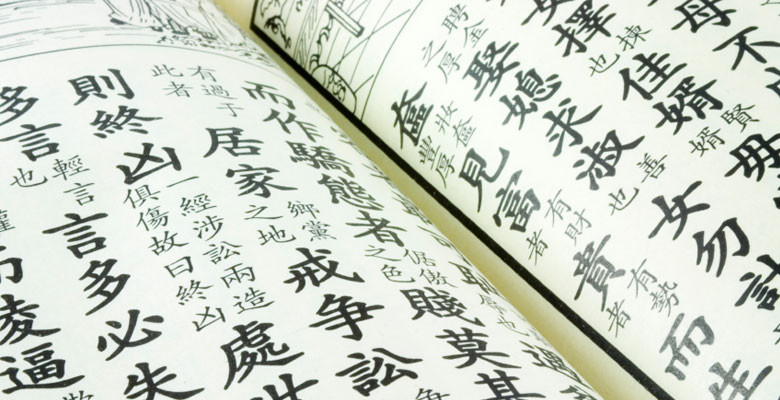
The best-selling book in Taiwan is the Chinese Almanac, or as it is also known the “Farmer’s Almanac”, with around 80% of households owning a copy. With its origins dating back over 2000 years, the Farmer’s Almanac has had and continues to have a huge influence on people’s lives.
The origin of the Almanac
According to legend, the Almanac was created by the Yellow Emperor, and was therefore called the “Yellow almanac”. It is thought that the latest version was created during the Qing Dynasty. In ancient times, the astronomical data was calculated and issued officially by the Bureau of Astronomy, and referred to as the “Loyal Calendar.” As the original content was created to guide the timing of farming such as when to plant crops, it also became known as the “Farmer’s Almanac.”
In the early years of the Republic of China (民國), “popular almanacs” (通書), folk versions of the “Farmer’s Almanac” were updated and published by fortune tellers and fengshui masters. It is said that two-thirds of almanacs currently used in Taiwan originate from Jicheng Hall (繼成堂), which was founded by the Hong family in Fujian China over two hundreds years ago.
What is the Almanac?
To be able to fully explain seasonal climate changes, ancient astronomers used the vernal equinox, summer solstice, autumnal equinox, and winter solstice to define 24 solar terms determined by changes in the sun’s position in the zodiac during the year.
However, the Famer’s Almanac is not just for agricultural purposes. Apart from weather forecasts, tide tables, moon phases, and planting charts, the lunar calendar also provides exhaustive astrological information and predictions such as auspicious dates, fleeting zodiac luck, exorcism of evil influences, daily positions of the foetal God and God of wealth, and so on. It is an all-inclusive guidebook, an encyclopaedia of living for people’s daily life.
Although some people and the younger generation in particular may consider the Farmer’s Almanac to be superstitious and out-dated, most Taiwanese still use it as a reference guide to establish dates for all critical events from birth to death (and especially marriage), and it remains a valuable traditional custom in Taiwan honouring the wisdom of the ancestors.
How do you use the Almanac?
Selecting auspicious dates is the most common use of the Famer’s Almanac nowadays. This is called “Ze-Ri” (擇日), which means to pick a good day, a good hour for important occasions such as holding a wedding or a funeral ceremony, sacred rituals or opening a new store, starting a new businesses, signing a contract, moving to a new house, when to travel, and even the best date for a caesarean section.
As well as auspicious days, the almanac also lists days when certain activities should be avoided, and so days are listed as “宜” (suitable for activities) or “忌” (unsuitable for activities) depending on which “Shensha” (神煞deity) is prevalent. There are hundreds of “Jishen” (吉神; Auspicious Gods) and Xiongshen (兇神; Fierce Gods). Jishen and lucky stars lead to smooth activities or achievements, whereas Xiongshen and malignant stars incur damage or destruction. Therefore “Auspicious” or “Ominous” day are determined by the attendance of deities. For example, if Jishen face Xiongshen encounters, then it is an ominous day (諸事不宜; good for nothing), whereas when Jishen appear unopposed, then it is an auspicious day (諸事皆宜; everything will go well).
The optimal way to acquire auspiciousness and avoid misfortune is to coordinate your Chinese animal zodiac with auspicious hours of the day, and this is how we chose the date and time to launch this version of the website (Wednesday, April 23rd, between 1pm and 4:59pm). Whether or not you believe in the auspiciousness, every little helps!
